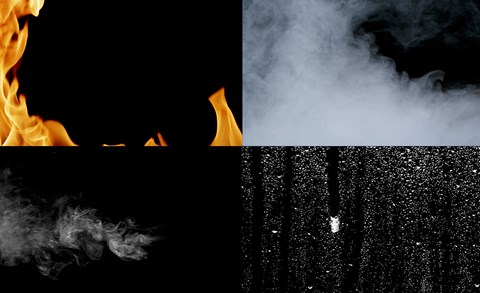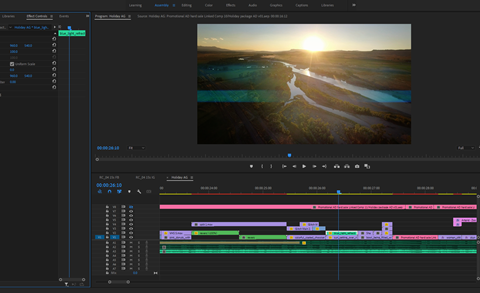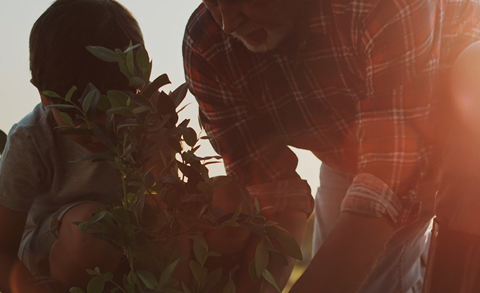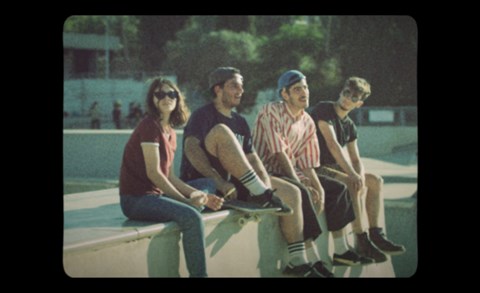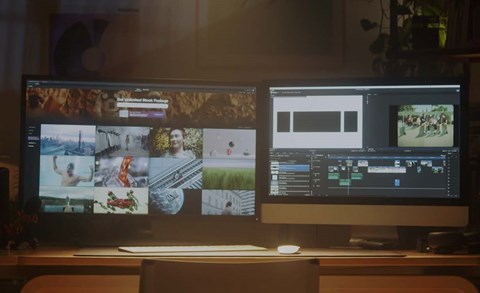Have you ever watched a movie and thought to yourself, "There's just no way that's real!"? Chances are, you're correct, but properly done VFX creates the illusion of reality in those unbelievable scenarios. We've all seen VFX, whether in your favorite blockbuster, the muzzle flash of a gun or fake artwork on a wall. The task of a visual artist is to incorporate the best visual effects that make sense, add to the story and advance the form of filmmaking. This article will explore VFX in detail and give you a practical method of using it in your content creation.
What is VFX and what does it stand for?
What does VFX mean? "VFX" stands for visual effects and is the process by which images are manipulated and enhanced outside the normal shooting period. Effects can be practical VFX, meaning they are done in-camera and enhanced later in the filmmaking process. They can also be generated by computer software, animation and compositing. These options are routinely chosen because a practical effect may be too expensive, dangerous or impractical. And there are also creative choices that the filmmaker may want to have that those practical effects simply cannot do.
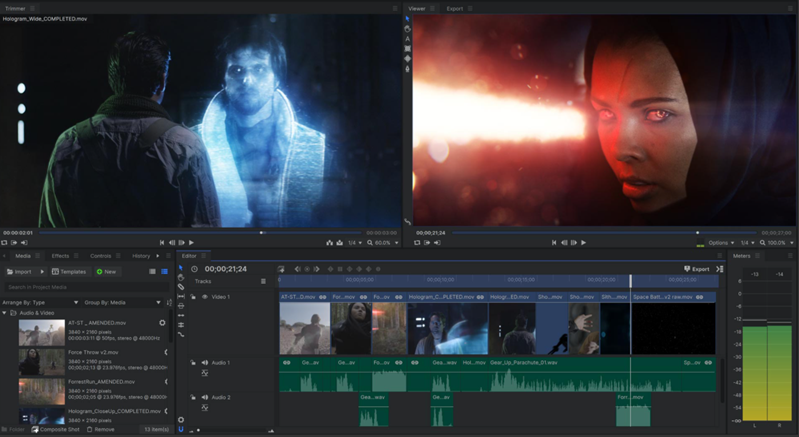
VFX has a long history. Starting with Swedish art photographer Oscar Rejlander who combined 32 negatives into a single image in 1856. It evolved to in-camera practical effects that felt more like tricks than image manipulation. First, film strips were manipulated with dissolves, multiple exposures, time-lapse and hand-painted color. Eventually, animation made its way on the scene, and live-action movies incorporated miniature movie sets and matte-painting effects. Today, most effects are computer-generated and appear in most, if not all, movies released.
Visual effects vs. special effects: Are they the same?
While many think the terms are interchangeable, visual effects are not the same as special effects. The key point of difference can be seen in the word "visual," where the reminder for you is that VFX works directly with the manipulation of images. Special effects, on the other hand, are achieved during the actual filming process and can range from different departments. Makeup, prosthetics, pyrotechnics, fake rain and animatronics are all examples.
Another way to remember is that all effects achieved in post-production are VFX. The practical effects mentioned above would classify as special effects, whereas those achieved in post-production are VFX. It's to these types of effects that we now turn.
Types of visual effects
Although animation certainly counts as a visual effect, odds are you aren't running a team of hand-drawing illustrators for your movie. The following VFX types are the most common and are great starting points for making your way in the VFX world (for the record, you can totally animate with all of them).
Computer-generated imagery
While computers are now ubiquitous and used for all productions, the term becomes less blurry with a notable caveat. Computer-generated imagery, or CGI for short, are images made totally with computers' help. Nothing else. This type of VFX has been utilized in Marvel movies, Pixar films, the Lord of the Rings franchise and thousands more. One of the first films to pioneer its usage was Toy Story, and animators and filmmakers have built upon its usage since.
Compositing
You can understand compositing by thinking about it as a composition of layers on the screen. For instance, imagine you have an image within an image you're watching (such as the intro of True Detective). This would be called double exposure, where two images are layered upon each other to create a single frame.
The most common form of compositing comes through the use of green screen technology. By now, you've almost certainly seen or used it yourself. An actor, or group of actors, performs against or around a green screen as if they were in the scripted environment. Later in post-production, the image the audience is meant to see gets transposed onto the background through what is called chroma keying. Having a handle on green screen basics will go a long way in helping your videos.
Motion capture
Marrying the 2 forms of VFX together, motion capture animation allows actors to behave in their environment and act out the scene that will be later digitized and manipulated. A famous example of this has been with Andy Serkis' body of work. Either acting as Gollum in The Lord of the Rings or as the protagonist ape in Planet of the Apes, Serkis' performance is captured to give the ultimate image more realism. Through his body movement and facial expressions, Serkis is able to deliver a 3-D performance that enhances the quality of the overall picture.
Getting started in VFX
While you may not have the budget that Pixar or Disney Studios does, you can still dip your toe in the water with VFX. A small way to get started for content creators is to use popular apps like FaceApp as a form of de-aging technology. You can either create videos in the vein of The Curious Case of Benjamin Button or simply use this technique to amplify your presence on screen. It's a beginner's step toward incorporating more VFX into your content.
VFX software for beginners
Hitfilm
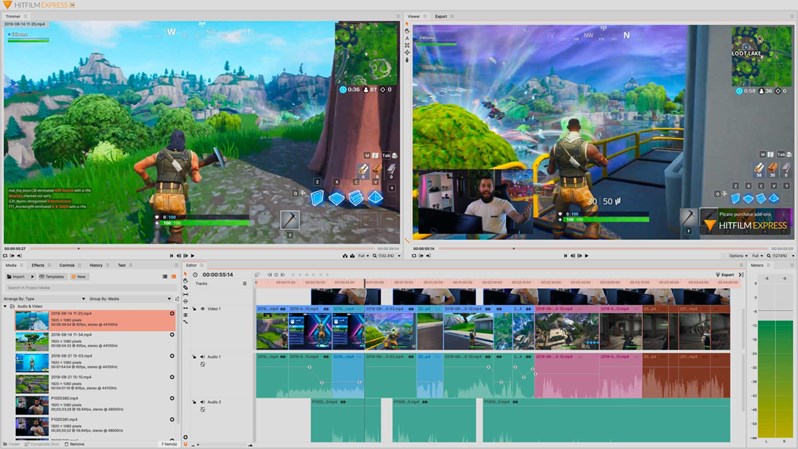
If you're just getting started and don't want to be a full-time VFX artist, check out the free video effects software first. For example, Hitfilm, which offers professional-grade free editing software with a user-friendly interface, has plenty of stock VFX, provides online tutorials to get started.
After Effects
Adobe After Effects is another terrific video effects software because it's so well-known, and there are plenty of resources that will help you get started. It's fantastic for green screen, motion capture animation and can be an entry-point into 2D and 3D graphics.
There are plenty of other programs out there, so check out our article listing some recommended After Effects alternatives.
Artgrid
While Artgrid is not a VFX program, it does have in its footage catalog plenty of video overlays. So head over to Artgrid's Overlay category and get stock VFX like lens flare, smoke, film grain and many other effects that will help enhance your videos and make them stand out.
FAQ
What's the difference between SFX and VFX?
"Special effects vs. visual effects" has stumped a few people. SFX are practical effects that are not done in-camera and are typically relegated to other departments (props, makeup, etc.). On the other hand, VFX deals exclusively with the manipulation of images and is primarily done in post-production with the exception of a few practical effects (miniatures, matte-painting, etc.).
What's the difference between CGI and VFX?
CGI is a form of VFX. It is an image wholly done on the computer, whereas VFX can combine images on a set with computer-generated imagery through motion capturing or compositing.
Why should I add VFX to my videos?
Adding VFX to your videos will give you creative versatility and help you spice up your content with more life. Whether you're filming a speech before Congress, putting on motion capture suits or faking the moon landing, VFX gives you the added life that will make your videos stand out.
How to use VFX in Tik Tok?
Use VFX in Tik Tok through FaceApp. You can utilize its de-aging technology, change your gender in your profile picture or try out the Hollywood feature like @itsaishamian.
@itsaishamian♬ BLACKOUT. Thekatiebradshaw - KATIE ♡︎
Conclusion
Visual effects are present in almost every movie you see, not just with explosions, dragons or superheroes. Having a basic understanding and incorporating the best visual effects into your videos can give you an edge in content creation and allow you to engage more with your audience. Utilize them correctly, and your followers will be thrilled.

